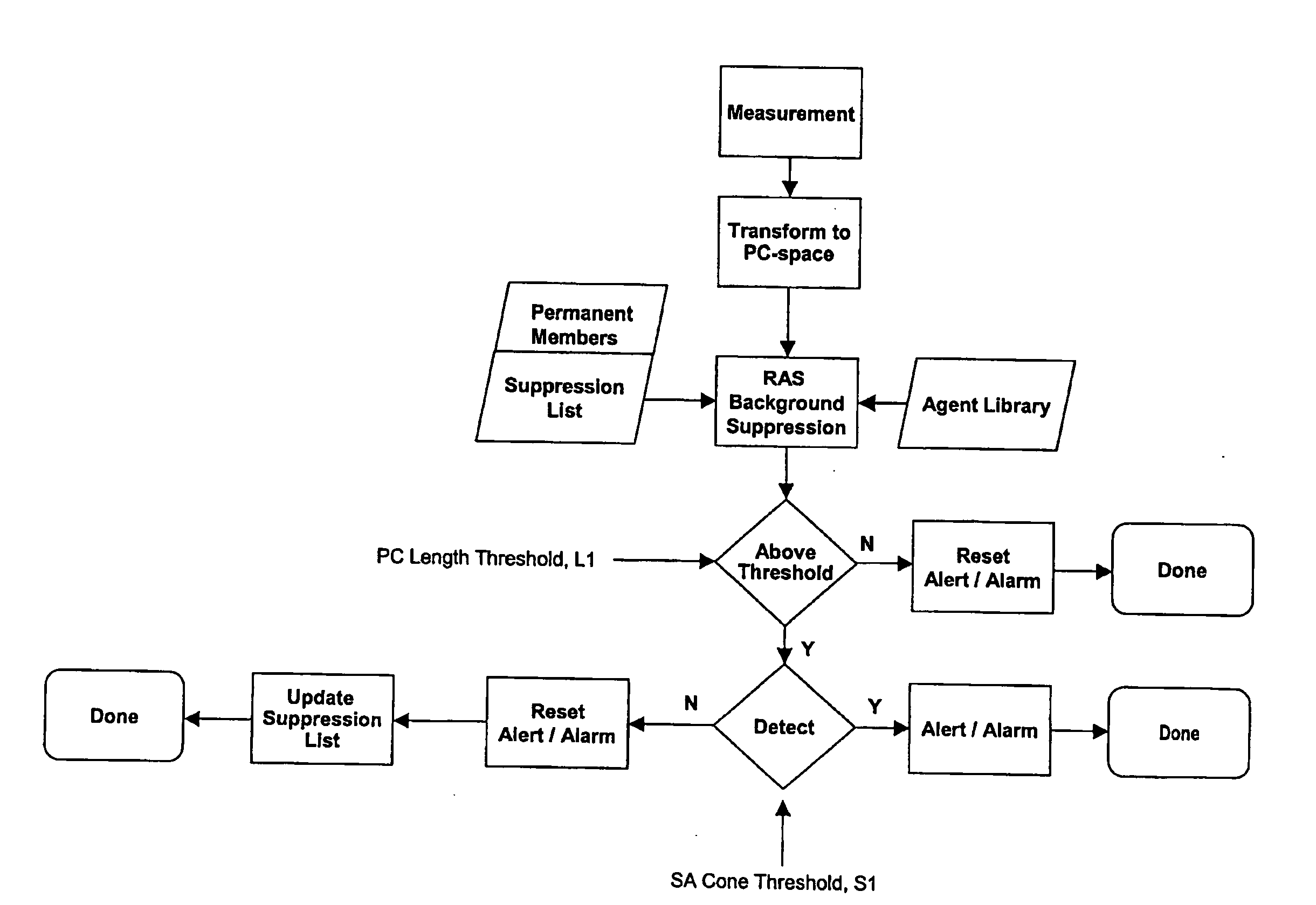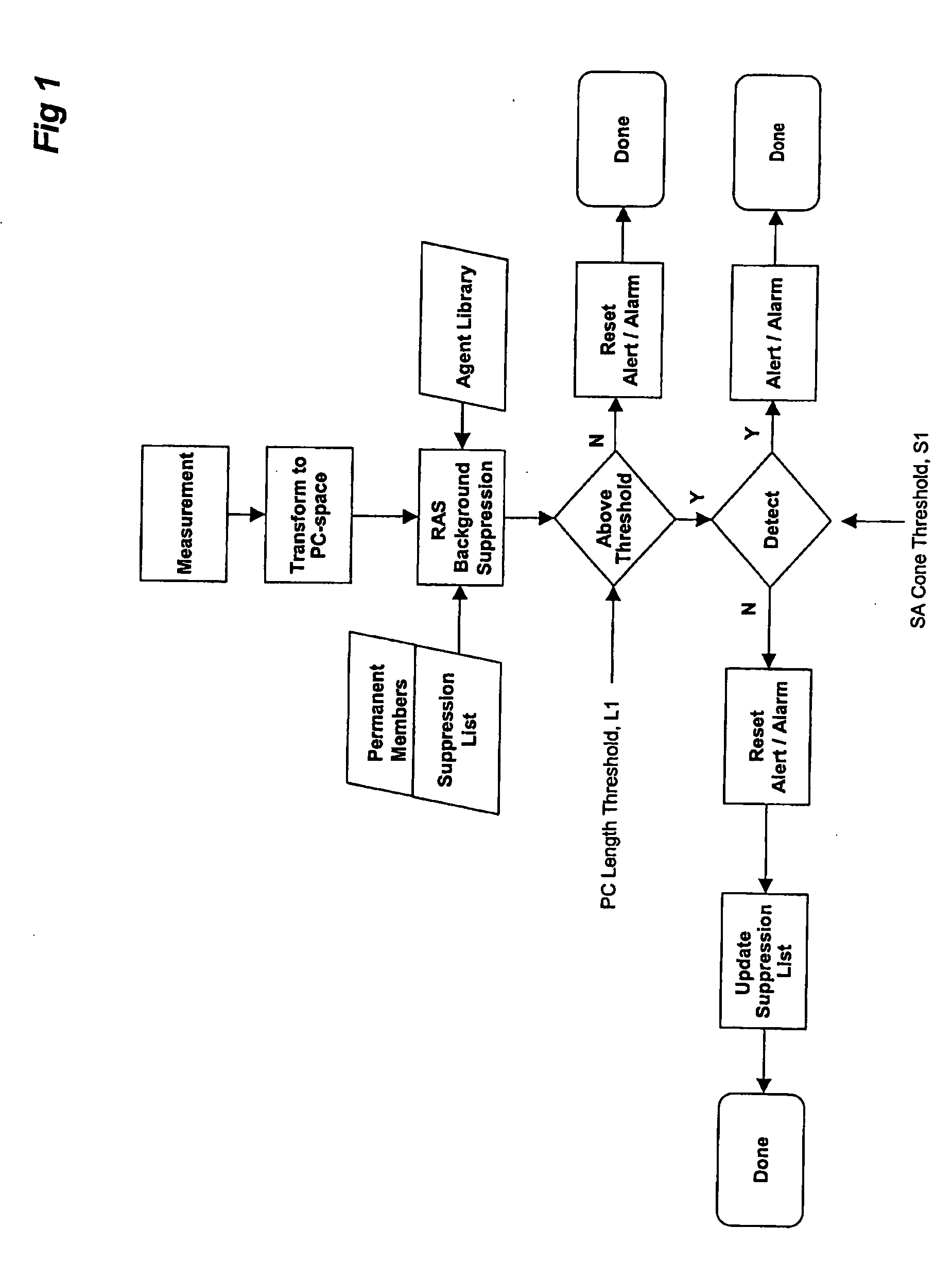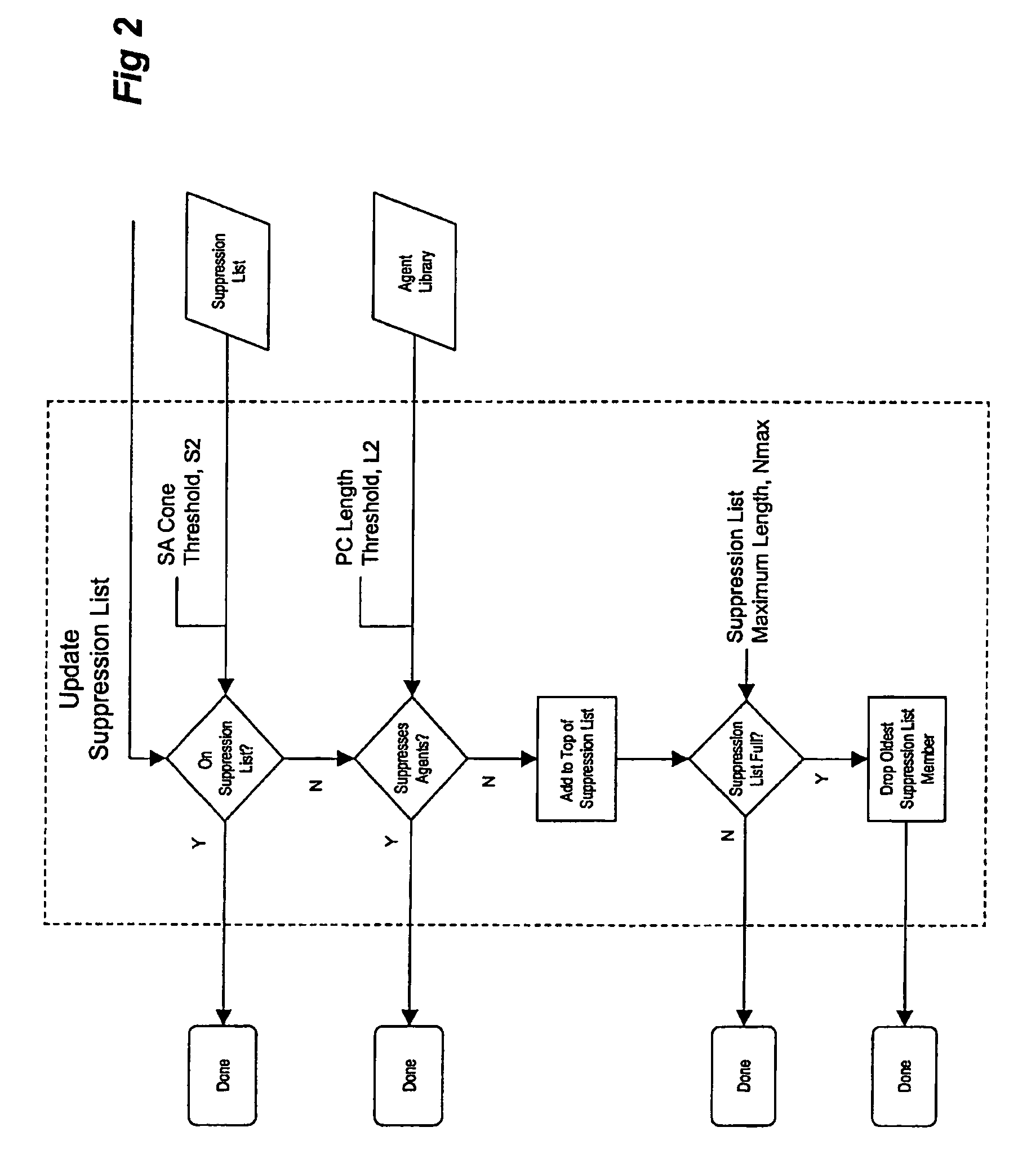Population of background suppression lists from limited data in agent detection systems
a technology of background suppression and agent detection, applied in the field of methods and systems for detection of agents, can solve the problems of increasing detection difficulty, increasing detection difficulty, and increasing the difficulty of bio-aerosol warfare agents detection in the presence of indoor or outdoor backgrounds, and achieve the effect of learning and effective with tim
- Summary
- Abstract
- Description
- Claims
- Application Information
AI Technical Summary
Benefits of technology
Problems solved by technology
Method used
Image
Examples
Embodiment Construction
[0038]The present invention provides methods and systems for determining the {X} members of a suppression list to be used with a “rotate and suppress” algorithm for background suppression and agent detection. (We refer to this determination as “populating the suppression list.”)
[0039]A top level view of the method is shown in FIG. 1. Measurements in raw spectral space undergo a Transform into PC-space using a principal component transformation determined ahead of time using the well-known methods of principal component analysis. Rotate and Suppress (RAS) Background Suppression is performed on both the principal components of the most recent data and the principal components of the Agent Library. Rotate and suppress requires a short Suppression List—typically 3 or 4 constituents long. The suppression list can be populated either from a Background Constituent Library or using the principal components of recent measurements which were not identified as agents. Detection is performed by...
PUM
 Login to View More
Login to View More Abstract
Description
Claims
Application Information
 Login to View More
Login to View More - R&D
- Intellectual Property
- Life Sciences
- Materials
- Tech Scout
- Unparalleled Data Quality
- Higher Quality Content
- 60% Fewer Hallucinations
Browse by: Latest US Patents, China's latest patents, Technical Efficacy Thesaurus, Application Domain, Technology Topic, Popular Technical Reports.
© 2025 PatSnap. All rights reserved.Legal|Privacy policy|Modern Slavery Act Transparency Statement|Sitemap|About US| Contact US: help@patsnap.com



